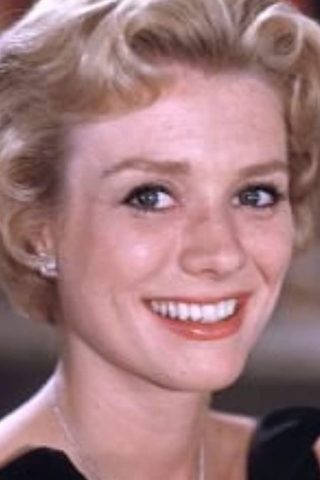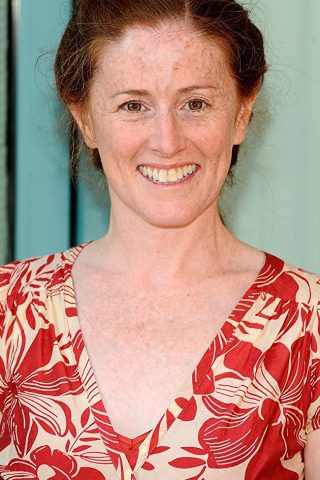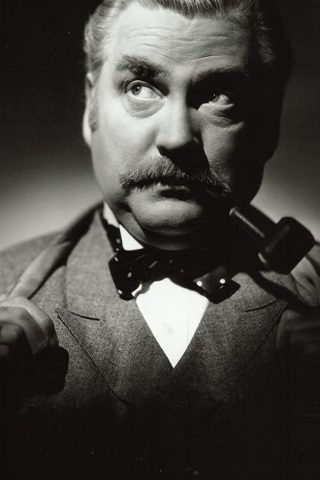
| Name | Inger Stevens |
| Phone |  |
| Email ID |  |
| Address |  |
| Click here to view this information |
This enigmatic Stockholm-born beauty had everything going for her, including a rapidly rising film and TV career. Yet on April 30, 1970, at only 35, Inger Stevens would become another tragic Hollywood statistic — added proof that fame and fortune do not always lead to happiness. Over time, a curious fascination, and perhaps even a morbid interest, has developed over Ms. Stevens and her life. What exactly went wrong? A remote, paradoxical young lady with obvious personal problems, she disguised it all with a seemingly positive attitude, an incredibly healthy figure and a megawatt smile that wouldn’t quit. Although very little information has been filtered out about Ms. Stevens and her secretive life over the years, William T. Patterson’s eagerly-anticipated biography, “The Farmer’s Daughter Remembered: The Biography of Actress Inger Stevens” (2000), finally put an end to much of the mystery. But not quite all. The book claims that a large amount of previously-published information about Ms. Stevens is either untrue or distorted.
A strong talent and consummate dramatic player of the late 50s and 60s, she was born Inger Stensland, the eldest of three children, of Swedish parentage. A painfully shy and sensitive child, she was initially drawn to acting as a girl after witnessing her father perform in amateur theater productions. Her rather bleak childhood could be directed at a mother who abandoned her family for another man when Inger was only 6. Her father moved to the States, remarried, and eventually summoned for Inger and a younger brother in 1944 to join him and his new bride. Family relations did not improve. As a teenager, she ran away from home and ended up in a burlesque chorus line only to be brought home by her father. After graduation and following some menial jobs here and there, she moved to New York and worked briefly as a model while studying at the Actors Studio. She broke into the business through TV commercials and summer stock, rising in the ingénue ranks as a guest in a number of weekly series.
Often viewed as the beautiful loner or lady of mystery, an innate sadness seemed to permeate many of her roles. Inger made her film debut at age 22 opposite Bing Crosby in Man on Fire (1957). Serious problems set in when Inger began falling in love with her co-stars. Broken affairs with Crosby, James Mason, her co-star in Cry Terror! (1958), Anthony Quinn, her director in Cecil B. DeMille’s The Buccaneer (1958), and Harry Belafonte, her co-star in The World, The Flesh and The Devil (1959), left her frequently depressed and ultimately despondent. An almost-fatal New Year’s day suicide attempt in 1959 led to an intense period of self-examination and a new resolve. A brief Broadway lead in “Roman Candle”, an Emmy-nominated role opposite Peter Falk in The Dick Powell Theatre: Price of Tomatoes (1962), and popular appearances on such TV shows as Bonanza (1959), The Twilight Zone (1959) and Route 66 (1960) paved the way to a popular series as “Katy Holstrum”, the Swedish governess, in The Farmer’s Daughter (1963). This brisk, change-of-pace comedy role earned her a Golden Globe award and Emmy nomination, and lasted three seasons.
Now officially a household name, Inger built up her momentum once again in films. A string of parts came her way within a three-year period including the sex comedy A Guide for the Married Man (1967) as roving eye husband Walter Matthau’s unsuspecting wife; Clint Eastwood’s first home-made American “spaghetti western”, Hang ‘Em High (1968); the crime drama, Madigan (1968) with Henry Fonda and Richard Widmark; the westerns Firecreek (1968) with Fonda again plus James Stewart, and 5 Card Stud (1968) opposite Dean Martin and Robert Mitchum; the political thriller House of Cards (1968) starring George Peppard and Orson Welles; and A Dream of Kings (1969) which reunited her with old flame Anthony Quinn. Although many of her co-starring roles seemed to be little more than love interest filler, Inger made a noticeable impression in the last movie mentioned, by far the most intense and complex of her film career. Adding to that mixture were a number of well-made TV mini-movies. On the minus side, she also resurrected the bad habit of pursuing affairs with her co-stars, which would include Dean Martin and, most notably, Burt Reynolds, her last.
In April of 1970, Inger signed on as a series lead in a crime whodunit The Most Deadly Game (1970) to be telecast that September. It never came to be. Less than a week later, she was found unconscious on the floor of her kitchen by her housekeeper and died en route to the hospital of acute barbiturate intoxication — a lethal combination of drugs and alcohol. Yvette Mimieux replaced her in the short-lived series that fall. For all intents and purposes, Ms. Stevens’ death was a suicide but Patterson’s bio indicates other possibilities. Following her death, it came out in the tabloids that she had been secretly married to African-American Ike Jones since 1961. The couple was estranged at the time of her death.
Details
Inger Stevens Keywords
Inger Stevens Contact Details, Inger Stevens Facebook, Inger Stevens Instagram, Inger Stevens Phone Number, Inger Stevens Cell Phone, Inger Stevens Address, Inger Stevens Whatsapp Number, Inger Stevens Whatsapp Group, Inger Stevens Email, Inger Stevens Phone Number 2020, Inger Stevens Twitter Account




